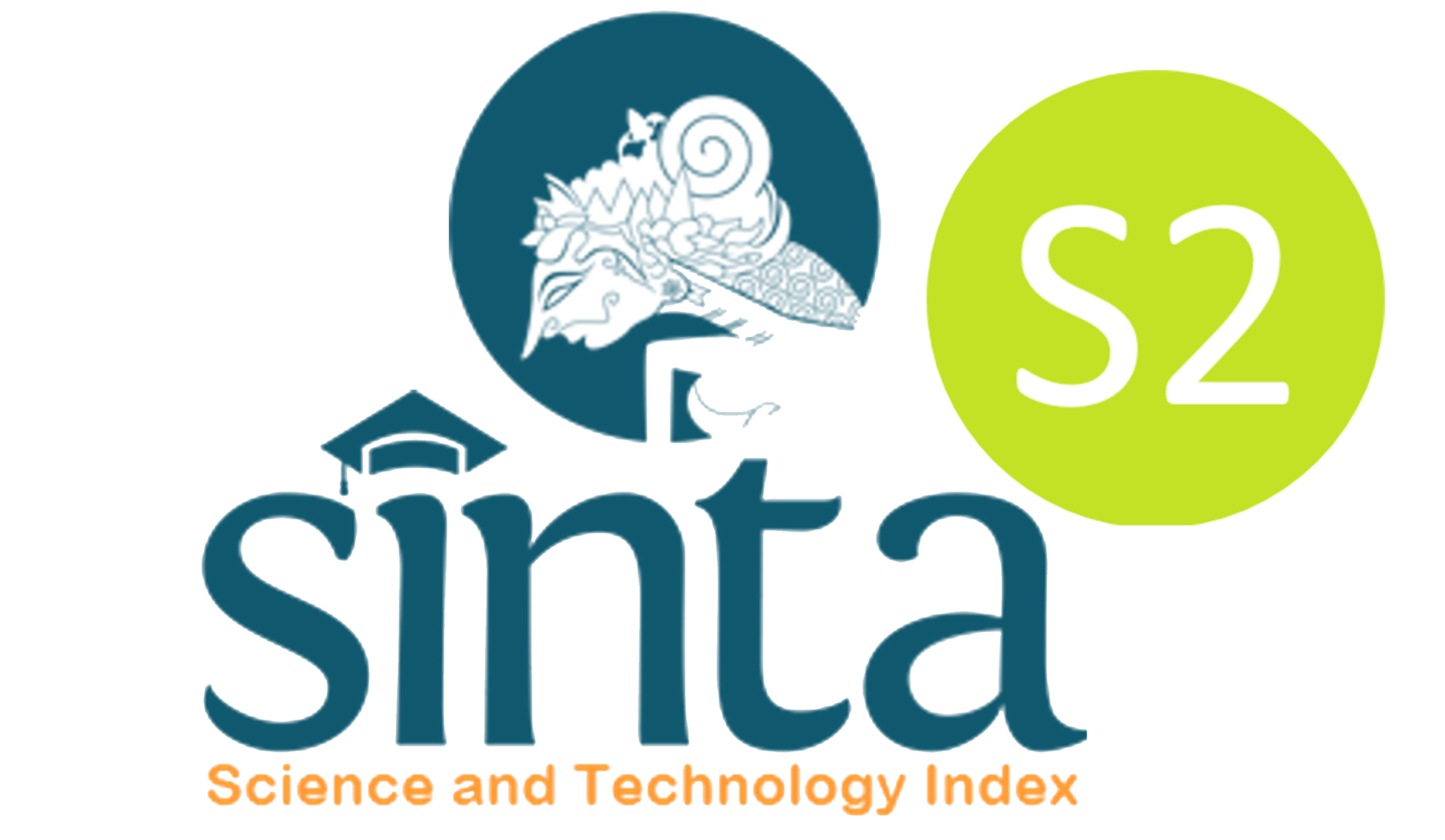Classification of Multiclass Ensemble SVM for Human Activities based on Sensor Accelerometer and Gyroscope
Supriyadi La Wungo(1); Mardewi Mardewi(2); Firman Aziz(3*); Pertiwi Ishak(4); Hechmi SHILI(5);
(1) Universitas Pancasakti
(2) STMIK Kreatindo Manokwari
(3) Universitas Pancasakti
(4) Universitas Pancasakti
(5) University of Tabuk
(*) Corresponding Author
AbstractHuman Activity Recognition is technology introduced to recognize human activities. Several technologies that have been applied are Accelerometer sensors, Gyroscope sensors, Cameras, and GPS. The selection of the Support Vector Machine algorithm is due to its capabilities to minimize errors in training data sets and the Curse of dimensionality which can estimate parameters as well as its ability to find the best hyperplane that separates two classes. The SVM algorithm was originally developed for the classification of two classes. Problem raised if there are more than two classes. In addition, the performance will not optimal for the large-scale data. Therefore, modification the current design is needed. An ensemble technique can be used to combine the Support Vector Machine algorithm with the bagging algorithm. This study proposes the application of an ensemble SVM algorithm to classify human activities based on accelerometers and gyroscope sensors on smartphones. The total data is 13725 records with 4575 representatives of each class. From the results of the overall data partition carried out in the calcification process using the ensemble SVM algorithm, the best performance was generated when comparing datasets with 80% training data and 20% test data from a total of 13725 records because it succeeded in increasing accuracy, precision, and sensitivity. KeywordsClassification; Human Activity Recognition; Ensemble; Bagging; Support Vector Machine
|
Full Text:PDF |
Article MetricsAbstract view: 328 timesPDF view: 172 times |
Digital Object Identifier https://doi.org/10.33096/ilkom.v15i1.1270.107-117 https://doi.org/10.33096/ilkom.v15i1.1270.107-117
|
Cite |
References
M. Labrador and O. Yejas, Human activity recognition: Using wearable sensors and smartphones. 2013.
X. Su, H. Tong, P. J.-T. science and technology, and undefined 2014, “Activity recognition with smartphone sensors,” ieeexplore.ieee.org, Accessed: Jun. 15, 2022. [Online]. Available: https://ieeexplore.ieee.org/abstract/document/6838194/.
S. Ranakoti et al., “Human fall detection system over IMU sensors using triaxial accelerometer,” Adv. Intell. Syst. Comput., vol. 798, pp. 495–507, 2019, doi: 10.1007/978-981-13-1132-1_39.
J. Chaochuan et al., “Human activity recognition using support vector machine for automatic security system,” iopscience.iop.org, doi: 10.1088/1742-6596/1192/1/012017.
D. James, J. Lee, and K. Wheeler, “Introduction to wearable sensors,” SpringerBriefs Appl. Sci. Technol., pp. 1–6, 2019, doi: 10.1007/978-981-13-3777-2_1.
L. Chen and C. D. Nugent, “Sensor-Based Activity Recognition Review,” Hum. Act. Recognit. Behav. Anal., pp. 23–47, 2019, doi: 10.1007/978-3-030-19408-6_2.
L. Cao, Y. Wang, Q. Jin, J. M.-2017 I. C. on, and undefined 2017, “ActiRecognizer: Design and implementation of a real-time human activity recognition system,” ieeexplore.ieee.org, Accessed: Jun. 15, 2022. [Online]. Available: https://ieeexplore.ieee.org/abstract/document/8250368/.
M. Chen, J. Han, P. Y.-I. T. on Knowledge, and undefined 1996, “Data mining: an overview from a database perspective,” ieeexplore.ieee.org, Accessed: Jun. 15, 2022. [Online]. Available: https://ieeexplore.ieee.org/abstract/document/553155/.
D. Zhang, “Wavelet Transform,” pp. 35–44, 2019, doi: 10.1007/978-3-030-17989-2_3.
S. Kaghyan, … H. S.-J. of I. M. and A., and undefined 2012, “Activity recognition using k-nearest neighbor algorithm on smartphone with tri-axial accelerometer,” foibg.com, Accessed: Jun. 15, 2022. [Online]. Available: http://www.foibg.com/ijima/vol01/ijima01-2-f.pdf#page=46.
D. Anguita, A. Ghio, … L. O.-P. of the, and undefined 2013, “A public domain dataset for human activity recognition using smartphones,” upcommons.upc.edu, Accessed: Jun. 15, 2022. [Online]. Available: https://upcommons.upc.edu/handle/2117/20897.
S. Lee, S. Yoon, … H. C. on big data and smart, and undefined 2017, “Human activity recognition from accelerometer data using Convolutional Neural Network,” ieeexplore.ieee.org, Accessed: Jun. 15, 2022. [Online]. Available: https://ieeexplore.ieee.org/abstract/document/7881728/.
M. Zubair, K. Song, C. Y.-2016 I. International, and undefined 2016, “Human activity recognition using wearable accelerometer sensors,” ieeexplore.ieee.org, Accessed: Jun. 15, 2022. [Online]. Available: https://ieeexplore.ieee.org/abstract/document/7804737/.
N. Hardiyanti, A. Lawi, Diaraya, and F. Aziz, “Classification of Human Activity based on Sensor Accelerometer and Gyroscope Using Ensemble SVM method,” Proc. - 2nd East Indones. Conf. Comput. Inf. Technol. Internet Things Ind. EIConCIT 2018, pp. 304–307, Nov. 2018, doi: 10.1109/EICONCIT.2018.8878627.
A. Lawi, F. Aziz, and S. L. Wungo, “Increasing accuracy of classification physical activity based on smartphone using ensemble logistic regression with boosting method,” J. Phys. Conf. Ser., vol. 1341, no. 4, p. 042002, Oct. 2019, doi: 10.1088/1742-6596/1341/4/042002.
F. Aziz, S. Usman, J. J.-J. M. INFORMATIKA, and undefined 2021, “Klasifikasi Physical Activity Berbasis Sensor Accelorometer, Gyroscope, dan Gravity menggunakan Algoritma Multi-class Ensemble GradientBoost,” stmik-budidarma.ac.id, Accessed: Jun. 15, 2022. [Online]. Available: http://stmik-budidarma.ac.id/ejurnal/index.php/mib/article/view/3222.
F. Aziz, Klasifikasi Physical Activity Berbasis Sensor Accelorometer, Gyroscope Dan Gravity Menggunakan Algoritma Multi-Class Ensemble Gradientboost. 2021.
A. Lawi, F. Aziz, and S. Syarif, “Ensemble GradientBoost for increasing classification accuracy of credit scoring,” Proc. 2017 4th Int. Conf. Comput. Appl. Inf. Process. Technol. CAIPT 2017, vol. 2018-January, pp. 1–4, Mar. 2018, doi: 10.1109/CAIPT.2017.8320700.
F. A.-I. (Indonesian J. of C. and, “Increasing Performance of Multiclass Ensemble GradientBoost Classifier by Estimating the Newton Raphson Parameter in Physical Activity,” journal.ugm.ac.id, Accessed: Nov. 15, 2022. [Online]. Available: https://journal.ugm.ac.id/ijccs/article/view/73179.
F. A.-J. of S. and C. E. (JSCE) and undefined 2021, “Klasifikasi Aktivitas Manusia menggunakan metode Ensemble Stacking berbasis Smartphone,” journal.unpacti.ac.id, vol. 1, no. 2, p. 53, 2021, Accessed: Jun. 15, 2022. [Online]. Available: http://journal.unpacti.ac.id/index.php/JSCE/article/view/171.
F. Provost, R. K.-M. LEARNING-BOSTON-, and undefined 1998, “On applied research in machine learning,” Citeseer, Accessed: Jun. 16, 2022. [Online]. Available: http://citeseerx.ist.psu.edu/viewdoc/download?doi=10.1.1.32.9924&rep=rep1&type=pdf.
Refbacks
- There are currently no refbacks.
Copyright (c) 2023 Supriyadi La Wungo, Mardewi Mardewi, Firman Aziz, Pertiwi Ishak, Hechmi SHILI

This work is licensed under a Creative Commons Attribution-ShareAlike 4.0 International License.










